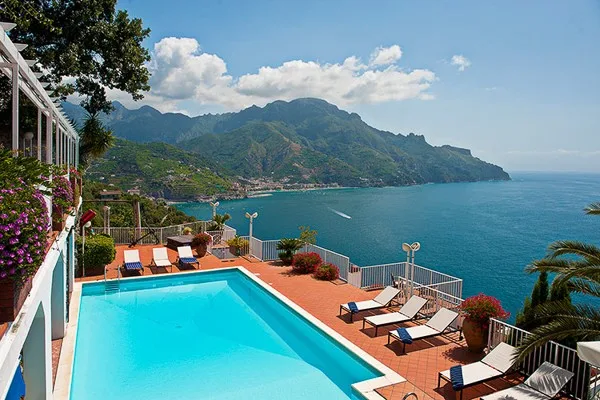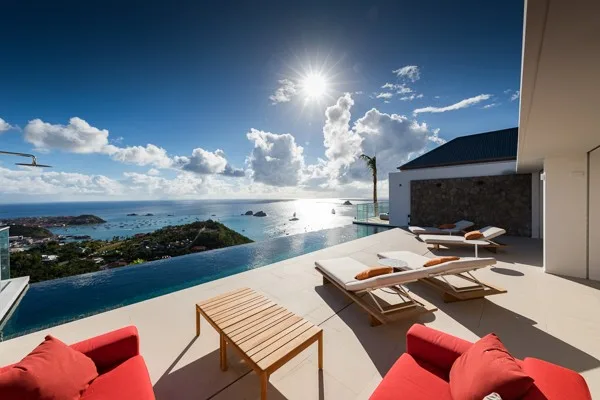Find Villa By Name
The word “villa” is thought to have originated during the Roman empire, as a term that referred to the country houses of the Roman upper-class. The owners of these homes lived in the city of Rome, and would construct spacious country homes either in the mountains of central Tuscany or Umbria, along the Tiber river, or along the nearby Amalfi Coast. It was thought that wealthy Romans built these country homes, or villas, to escape the heat of Rome during the summer.

In the middle ages the term “villa” gradually also came to represent any large Italian farmhouse which had significant fields under cultivation around it, and serfs and/or a small village dependent on it.
During the Renaissence era (14th and 15th century), as an upper class once again rose to prominence and wealth, the word “villa” once came to be associated with a country home or , fortified house on a hillside, owed by a wealthy merchant.
In the early 18th century the term “villa” was used by wealthy Londerers who built stately mansions in the countryside outside of London. These mansions were almost exclusively second homes, and were often referred to as “party villas” , where guests would “weekend” and have extravagant parties and hunt club outings.
In the 19th century the term “villa” was then misappropriated by property developers in England. These developers would build rows of free-standing suburban homes in the countryside outside of London, and then refer to the homes as “villas”. In the early twentieth century the term was further distorted by developers in England who would construct row houses in the suburbs and call them “villas”.
In most of the rest of Europe and in the United States however, the term “villa” continued to be used primarily to describe a stand-alone country mansion or seaside house. In the Caribbean, the development of “villas” can be attributed to the colonization efforts of the French, British and to a lesser extent, the Dutch. In the first phase of colonialism, plantations were developed, and the main manor house on a plantation was referred to as a plantation house or villa. In the post colonial era, these islands colonized by the British and French gained their independence, yet were still largely influenced by the mother country. Private individuals from these former colonial powers would build large private vacation homes on the islands and refer to them as villas.
The most common examples of a Caribbean villa can be seen today in the French Caribbean islands of St Barthelemy and St Martin, and in the former British islands of Barbados, Anguilla, Turks & Caicos and Jamaica. As was true in Roman times, a home in the Caribbean today that was built to serve as a second home, most often used for vacation, is referred to as a villa. Many of these villas are made available to rent by the week either through local property management companies like Caye Management on Ambergris Caye, Belize , or through locally-based villa rental companies like WIMCO Villas.

Today a Caribbean villa with a private swimming pool is typically priced to rent by the week, with prices starting at $225 per bedroom per night, or around $4,700 for a three bedroom villa in the peak winter vacation season of November to April. A large villa with luxurious features and amenties, with a superior location like being directly on a beach, may rent for over $30,000 a week in the peak winter season. These prices include maid service to clean the villa during the week. For families needing two or more bedrooms rooms, this makes renting a villa often more economical than reserving multiple hotel rooms.
When renting a villa for the week, guests can often choose to enhance their vacation experience by reserving extra services from a menu of services priced on an a la carte basis. These services include the use of a private chef to prepare and serve meals, extra staff to cater a meal or provide extra service during the day, reserving boat charters and scuba trips.
In recent times, it is not uncommon for resort hotels in the Caribbean, Mediterranean and South Pacific Islands to develop stand-alone villas on their properties. These villas rent at a premium as the guests staying there have full access to all of the resort’s services. Examples of this are villas at the Four Seasons properties in Nevis and Anguilla, the villas at La Samanna Hotel in St Martin, and villas at Eden Rock hotel, Cheval Blanc hotel and Le Sereno hotel in St Barths.
In some cases the owner of a villa may choose to employ a butler and a private chef, and in those cases, the villa is referred to as a fully staffed villa, or a villa with staff. If the villa is rented, the guest is only responsible for the cost of the food cooked, and does not pay anything extra for the services of the chef or butler. This is most commonly found in vacation destinations with a long season – like the Caribbean. In some cases, most notably with a villa on a private island, the cost of the food for all meals may be included in the weekly price to rent the villa. In this case, the villa is referred to as an all-inclusive-villa.
It is not uncommon to read that a celebrity chose to rent a private villa for a family vacation rather than stay in a hotel. This is because unlike a hotel or resort, a guest does not have to navigate a lobby, dining room or shared pool where they may be spotted by fans or paparazzi.